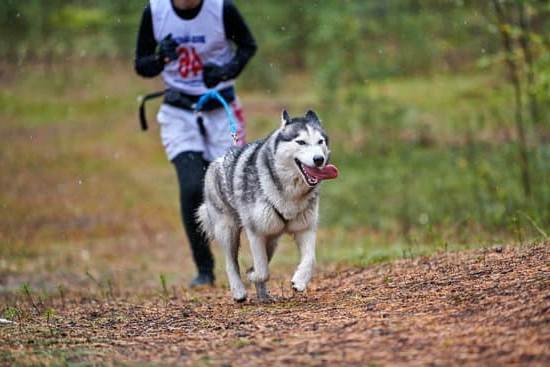One of the most common problems dog owners face is training their dog not to bark excessively. While barking can be a sign of excitement or happiness, it can also be a nuisance to neighbors or be indicative of a more serious problem, like separation anxiety.
There are a variety of methods you can use to train your dog to bark less. One of the most important things to keep in mind is that you must be consistent with your training. If you scold your dog for barking one day but allow him to bark the next, he will likely become confused and may even become more likely to bark.
One of the most popular methods of training a dog to bark less is the use of a shock collar. A shock collar sends a shock to the dog’s neck when he barks. While this may work in the short-term, it is not a humane method and can actually be quite dangerous.
Another popular method of training a dog to bark less is the use of a barking collar. A barking collar emits a sound or spray of citronella when the dog barks. This is a more humane option than a shock collar, but it can be expensive and may not be effective for all dogs.
One of the most important things to remember when training your dog to bark less is to be patient. It may take some time for your dog to learn how to properly behave, but with patience and consistency, you can train your dog to bark less.
How To Train Dog To Not Bark At Neighbors
Barking is a natural behavior for dogs, and unfortunately, it can often be a problem for their owners. Dogs bark for many reasons, including excitement, fear, boredom, and aggression. If your dog is barking excessively, it can be very annoying for your neighbors and can even lead to problems with the law. Thankfully, there are ways to train your dog to not bark at neighbors.
The first step is to determine the cause of your dog’s barking. If your dog is barking out of excitement, you will need to work on obedience training and teaching your dog to stay calm in situations that would normally excite him. If your dog is barking out of fear, you will need to work on building his confidence and desensitizing him to the things that scare him. If your dog is barking out of boredom, you will need to provide him with plenty of exercise and stimulation. And if your dog is barking out of aggression, you will need to work on obedience training and behavior modification.
Once you have determined the cause of your dog’s barking, you can start working on a training program to address the problem. The first step is to teach your dog to “speak” or “quiet” on cue. Start by teaching your dog to bark when you say “speak” and to stop barking when you say “quiet.” Once your dog has mastered this, you can start using the cue to stop him from barking at neighbors.
To do this, start by standing a short distance away from your dog, and ask him to “speak.” Once he barks, say “quiet” and give him a treat. Gradually increase the distance between you and your dog, and continue to give him a treat every time he stops barking. If your dog starts to bark again, say “quiet” and give him a treat. Be sure to praise him when he does well.
It will take time and patience to train your dog to not bark at neighbors, but it is definitely possible. With a little effort and perseverance, you can have a dog who is quiet and well-behaved around your neighbors.
How To Train Dog To Stop Barking At Everything
Dogs bark for a variety of reasons, from greeting people and other animals, to playing, to signaling danger. Most of the time, barking is normal and harmless. However, when a dog barks constantly for no reason or barks at inappropriate things, it can be very frustrating and annoying for their owners.
There are a few things you can do to help train your dog to stop barking at everything. First, it’s important to determine why your dog is barking in the first place. Once you know the reason, you can start working on a solution.
If your dog is barking out of excitement or because they’re playing, you can try to redirect their attention to something else. For example, if your dog is barking at people or other animals when they walk by your house, try to have them focus on a toy or treat instead. When your dog is calm, give them a cue, like “quiet” or “enough,” and reward them with a treat or praise when they stop barking.
If your dog is barking out of fear or anxiety, you’ll need to take a different approach. You’ll want to start by teaching your dog to relax in a calm environment. Once your dog is comfortable and relaxed, you can gradually expose them to the things that are causing them anxiety. Start with things that are relatively safe and non-threatening, like ringing the doorbell or people walking by your house. If your dog remains relaxed in the presence of these things, gradually increase the intensity and/or proximity.
It will likely take some time and patience to train your dog to stop barking at everything. However, with a little effort, you can help your dog become a more well-behaved and relaxed member of your family.
Train Dog To Not Bark At Other Dogs
One of the most common reasons that dogs are surrendered to animal shelters is due to problems with barking. In many cases, the barking is excessive and uncontrollable, which can be very frustrating for both the dog and the owner.
There are a few things that you can do to help train your dog to not bark at other dogs. The first step is to make sure that your dog is getting enough exercise. A tired dog is less likely to bark. You should also make sure that your dog is properly socialized and has plenty of exposure to other dogs.
In addition, you can help train your dog to not bark by teaching him or her basic obedience commands such as “sit” and “stay.” If your dog knows how to obey these commands, he or she will be less likely to bark out of excitement or frustration.
Finally, you can also use positive reinforcement to help train your dog to not bark. This means rewarding your dog when he or she does not bark, even if it is just for a short period of time. This will help your dog to associate not barking with something positive, which will eventually help to reduce the amount of barking that occurs.
Dog Whistle Training To Stop Barking
There are many reasons why a dog might bark, but most of them can be resolved through proper training. One method for stopping a dog from barking is through the use of a dog whistle.
Dogs are able to hear a wider range of frequencies than humans, and so a dog whistle can be an effective way to get their attention. When a dog starts barking, the whistle can be used to get their attention and stop the barking.
The key to using a dog whistle to stop barking is to make sure the dog is responding to the whistle. Some dogs might not be able to hear the whistle or might not respond to it, so it’s important to test the whistle on the dog before beginning any training.
To test the whistle, wait until the dog is barking and then blow the whistle. If the dog stops barking, then the whistle is working and can be used for training. If the dog does not stop barking, then the whistle is not working and should not be used.
Once the whistle is working, begin by blowing the whistle every time the dog starts barking. As the dog begins to associate the whistle with the barking, they will start to stop barking when they hear the whistle.
It may take a little bit of time for the dog to completely stop barking, but with patience and proper training, the dog can be taught to stop barking with the use of a dog whistle.

Welcome to the blog! I am a professional dog trainer and have been working with dogs for many years. In this blog, I will be discussing various topics related to dog training, including tips, tricks, and advice. I hope you find this information helpful and informative. Thanks for reading!





